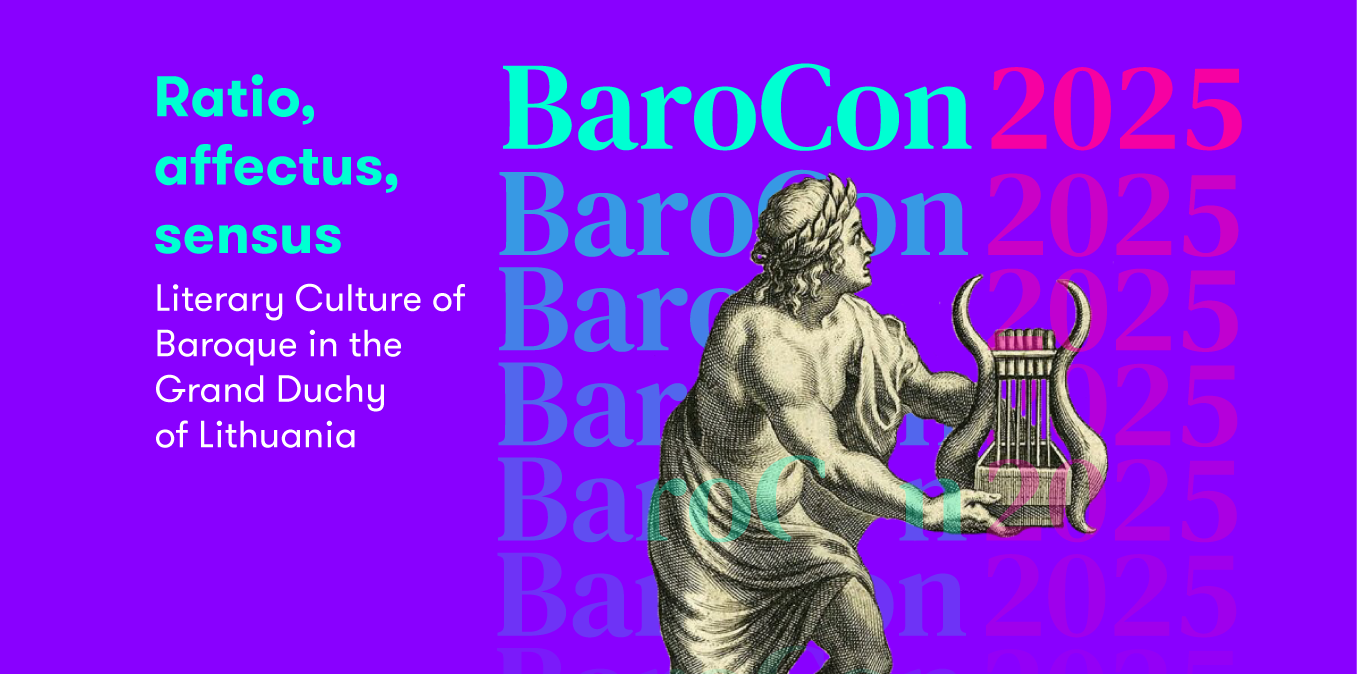Ratio, affectus, sensus: Literary Culture of the Baroque in the Grand Duchy of Lithuania
In 2025, we will commemorate the 400th anniversary of the first publication of Matheus Casimirus Sarbievius' most famous Latin poetry collection 'Lyricorum libri tres' (1625). This has led to 2025 being declared the Year of Baroque Literature in Lithuania. The eminent Jesuit neo-Latin poet of the Polish-Lithuanian Commonwealth, Sarbievius, has been hailed as the Christian Horace and the Sarmatian Horace. His theoretical thoughts on poetry and rhetoric are still highly regarded and have inspired new research on other concurrent themes and authors. This anniversary provides an opportunity to explore the extent and diversity of Baroque literary culture, which has seen a surge of interest in recent decades, both in the academic world and in popular culture. Therefore, the Institute of Lithuanian Literature and Folklore, together with the Faculty of Philology of Vilnius University, is organising an international academic conference "Ratio, affectus, sensus: Literary Culture of the Baroque in the Grand Duchy of Lithuania" on 25-27 September 2025 in the baroque city of Vilnius.
The aim of the multidisciplinary conference is to stimulate discussion on the literary culture of the "long seventeenth century" (from the end of the 16th century to the middle of the 18th century) in the Grand Duchy of Lithuania. This historical period, associated with dramatic changes and a general cultural crisis, is often described in contradictory terms and in constant tension between reason and senses, rigid structure and passions, classifications and impressions, etc. By embracing this contradiction, we invite an exploration of the theme in question through the lens of this dynamic interplay between reason (ratio), emotion (affectus) and the senses (sensus), which can be perceived in various genres of the period, such as poetry, biography, hagiography, rhetoric, private and public correspondence, and so on. The importance of the modern approach lies not only in what it can reveal about the Baroque in the Grand Duchy of Lithuania, but also about subsequent and contemporary literary culture, as scholars have demonstrated the continuing influence of a 'Baroque spirit'.
Event location
25–26 September the conference will take place at V. Krėvė (118) auditorium, Faculty of Philology
27 September the conference will take place at the Church Heritage Museum, Šv. Mykolo g. 9 (entrance from Maironio g. "Arkangelo konferencijų centras")
Keynote speakers

Ona Dilytė-Čiurinskienė
Senior Researcher, The Institute of Lithuanian Literature and Folklore
Prof Stephen Harrison
Professor of Latin literature, University of Oxford
Inga Vidugirytė-Pakerienė
The Baroque Vision and the City in Contemporary Lithuanian Women’s Literature
Inga Vidugirytė-Pakerienė
Vilnius University
The Baroque Vision and the City in Contemporary Lithuanian Women’s Literature
According to Martin Jay (1988), the Baroque vision is one of three main scopic regimes of modernity, alongside rational Cartesian perspectivalism and the descriptive cartographic view. Each scopic regime is characterized by Jay on the basis of the art in which it was inaugurated (Italian Renaisance painting, Baroque architecture and art, and Dutch lanscapes of the 17th century) and the philosophy that grounds that art. In his account of Baroque vision, Jay draws heavily on the works of the French philosopher Buci-Glucksman Baroque Reason (1984) and The Madness of Vision. The Baroque Aesthetics (1986). The Baroque vision is considered “mad” due to its fascination with opacity, unreadability, and the indecipherability of the reality it represents. As the result of the crisis of the reason, it self-consciously tends to the contradictions between surface and depth, to the distorted images, materiality, and the haptic quality. In Baroque reason, Buci-Glucksman reads the work of Baudelaire and Benjamin, who are both preoccupied with modern Paris, its passion for consumption, commodities, and the Other, the Women. The philosopher deals with the relation between the city and the Feminine, and the concept of the Woman as an allegory and a heroine of modernity. The feminist approach, introduced in the context of baroque reason, enables the analysis of the baroque vision as engendered. The paper explores the baroque vision in contemporary Lithuanian women’s urban writing. I argue that the contemporary baroqueness of the city (Vilnius) depends on the vision employed in the creative work of such authors as Ieva Dumbrytė, Eglė Frank, and Kotryna Zylė. I contrast these works with the novel Silva rerum by Kristina Sabaliauskaitė, who extensively refers to the history and artifacts of Lithuanian baroque culture but represents another type of vision.


